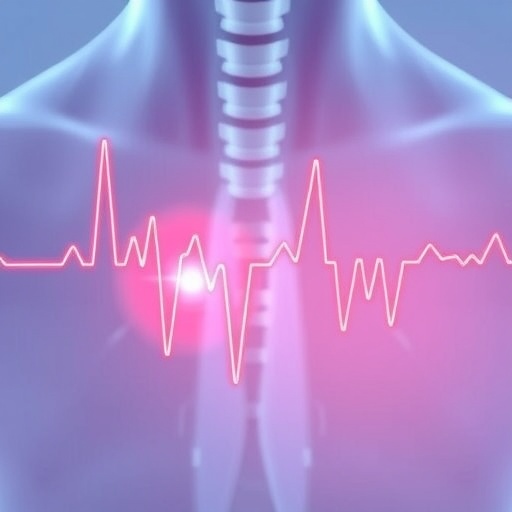Atrial fibrillation (AFib), a prevalent cardiac arrhythmia characterized by rapid and irregular heartbeats, stands as the foremost cardiac cause of stroke worldwide. Despite the availability of a spectrum of treatments, ranging from pharmacological interventions to invasive surgical procedures, the quest for more effective and personalized therapies remains a critical objective in cardiovascular medicine. Projections from the National Institutes of Health (NIH) anticipate that by 2050, up to 12 million individuals in the United States alone will be affected by AFib, underscoring the urgency for innovative therapeutic strategies.
One promising frontier in AFib treatment lies in neurostimulation—a technique involving the electrical stimulation of nerves to modulate physiological responses. Neurostimulation has shown potential beyond arrhythmias, offering therapeutic benefit in conditions such as heart failure with reduced ejection fraction and hypertension. However, extensive clinical trials have yielded underwhelming results, largely due to the lack of precision in dosing stimulation and the absence of real-time monitoring of patient responses. The therapeutic application has thus been hindered by an inability to deliver tailored stimulation regimens informed by dynamic physiological feedback.
In groundbreaking research published in the October 29, 2025 issue of PLOS ONE, Dr. Oluwasanmi Adeodu and his colleagues at Lehigh University have introduced a computational model that integrates the human cardiovascular system with neurophysiological control centers in the brain, linked through neural pathways that govern heart function. This holistic closed-loop model simulates the hemodynamic responses following AFib episodes and aims to predict the impact of neurostimulation on cardiovascular parameters. By capturing the interplay between cardiac mechanics and autonomic neural regulation, the model provides an unprecedented platform for optimizing neurostimulation therapies for AFib.
The development of this model involved translating intricate clinical observations into mathematical formulations amenable to computational analysis. “Our approach synthesizes clinical knowledge of AFib pathophysiology and its systemic effects into a quantifiable framework,” explains Adeodu. The model’s primary objective was to evaluate whether it could accurately replicate known clinical measurements such as heart rate fluctuations, stroke volume variations, and blood pressure profiles in AFib patients. This validation process was essential to establish the model’s credibility as a predictive tool for therapeutic intervention design.
Validation studies demonstrated robust concordance between the model’s outputs and empirical patient data, affirming its physiological fidelity. A particularly notable finding was the identification of a segment within the atrioventricular (AV) node as a promising target for neurostimulation. This insight is particularly compelling given the AV node’s established role as a focus for current ablation therapies aimed at controlling ventricular rate in AFib. The convergence of computational prediction with clinical practice highlights the model’s potential to guide refined, targeted interventions.
With this validated computational framework in place, researchers can now interrogate a multitude of neurostimulation scenarios in silico, circumventing ethical and logistical constraints associated with direct patient or animal experimentation. This capability enables systematic exploration of stimulation sites, intensities, and temporal patterns to discern optimal protocols for managing AFib’s hemodynamic derangements. The model thus serves as a critical bridge between theoretical understanding and practical application, accelerating the translational pipeline.
The project represents an interdisciplinary collaboration, incorporating expertise from chemical and biomolecular engineering, clinical cardiology, neuroscience, and computational modeling. Co-led by Professor Mayuresh Kothare and Dr. Babak Mahmoudi under a $2.2 million NIH grant through the SPARC program, the initiative reflects a concerted effort to harness peripheral nerve stimulation for treating diverse conditions including cardiac arrhythmias and hypertension. The project concluded in 2023–2024, setting a new benchmark in computational cardiology.
One of the key advantages underscored by Kothare is the model’s computational efficiency. Unlike complex three-dimensional cardiac models that necessitate supercomputing resources, this framework employs a tractable mathematical architecture capable of rapid simulation. Such efficiency paves the way for real-time applications and the incorporation of bidirectional data flow between patients and their digital representations, realized as “digital twins.” This paradigm shift enables clinicians to monitor, predict, and adjust treatment regimens dynamically based on continuous physiological feedback.
The ultimate vision articulated by Adeodu envisions a wearable, automated device capable of monitoring cardiac parameters in real-time and delivering calibrated neurostimulation to avert or reverse AFib episodes. This personalized medicine approach promises to transform AFib management from reactive therapies toward proactive, adaptive control systems harnessing state-of-the-art bioengineering and computational neuroscience innovations.
This study exemplifies how the fusion of engineering principles with clinical insights can unlock new avenues in disease management. By translating complex cardiac pathophysiology into algorithms and computational constructs, the research not only deepens mechanistic understanding but also offers actionable pathways to personalize therapeutic interventions. The work stands as a testament to the power of interdisciplinary collaboration in tackling some of medicine’s most challenging conditions.
As the model continues to be refined through clinical feedback, it is poised to become an indispensable tool for cardiologists, bioengineers, and neuroscientists. Its predictive capabilities can guide the design of next-generation neurostimulation devices and protocols, ultimately improving the lives of millions at risk of stroke and heart failure due to AFib. This computational advance heralds a new era where individualized cardiac care is informed by digital simulations, fostering precision and efficacy in treatment delivery.
Dr. Adeodu’s research invites a paradigm shift by demonstrating that once computational models robustly capture physiological phenomena, they become portals to previously inaccessible insights and therapeutic innovations. Through sustained integration of clinical data and mathematical modeling, the prospects for treating complex cardiovascular disorders with tailored neurostimulation are becoming a tangible reality.
Subject of Research:
Atrial fibrillation and neurostimulation for personalized cardiac therapy using computational modeling
Article Title:
Short term hemodynamic effects of atrial fibrillation in a closed-loop human cardiac-baroreflex system
News Publication Date:
29-Oct-2025
Web References:
- PLOS One Article
- Lehigh University Faculty – Mayuresh V. Kothare
- Lehigh News: Treating Disease Through Neurostimulation (Oct. 18, 2022)
Image Credits:
Courtesy of Lehigh University
Keywords:
Cardiovascular disease, Cardiac arrhythmias, Atrial fibrillation, Applied mathematics, Computational science, Mathematical modeling, Engineering, Personalized medicine, Heart failure, Hypertension, Bioelectronics, Systems neuroscience, Systems biology, Translational research, Biomedical engineering




